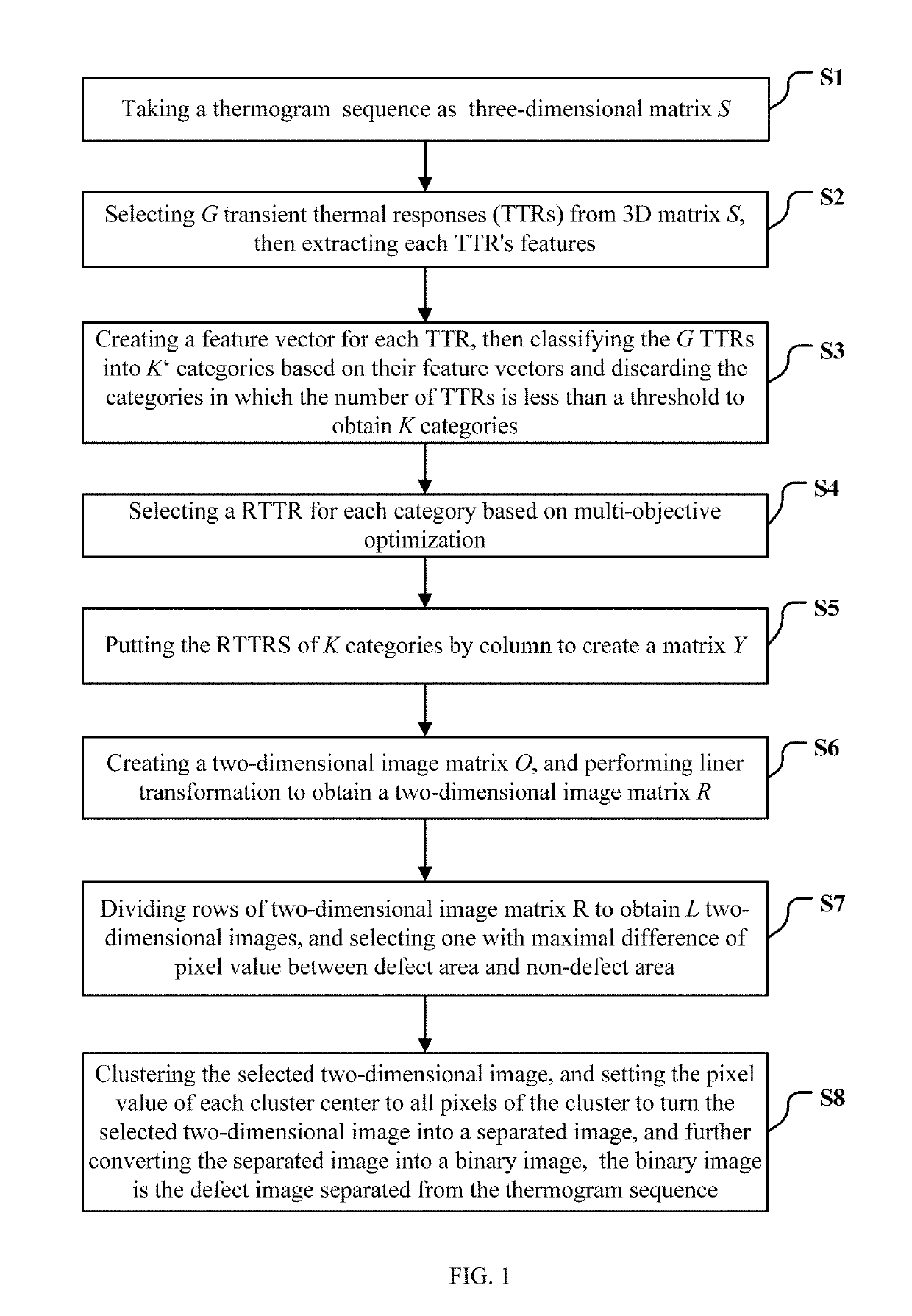Method for separating out a defect image from a thermogram sequence based on weighted naive bayesian classifier and dynamic multi-objective optimization
- Summary
- Abstract
- Description
- Claims
- Application Information
AI Technical Summary
Benefits of technology
Problems solved by technology
Method used
Image
Examples
embodiment
[0054]FIG. 1 is a flow diagram of a method for separating out a defect image from a thermogram sequence based on weighted naive Bayesian classifier and dynamic multi-objective optimization in accordance with the present invention.
[0055]In one embodiment, as shown in FIG. 1, the method for separating out a defect image from a thermogram sequence based on weighted naive Bayesian classifier and dynamic multi-objective optimization is provided, comprising:
[0056]Step S1: taking a thermogram sequence, recorded by an infrared thermal imaging camera, as a three-dimensional (3D) matrix S, where an element S(i,j,t) of the 3D matrix S is a pixel value of row i and column j of the thermogram sequence's frame t. As shown in FIG. 2, each frame has I rows and J columns, and the 3D matrix S has T frames.
[0057]Step S2: selecting G transient thermal responses (TTRs) from 3D matrix S, then extracting each TTR's features: Eg, Vupg, Vdowng, Taveg, Tmaxg;
[0058]where Eg is the TTR's energy, and calculated...
PUM
 Login to View More
Login to View More Abstract
Description
Claims
Application Information
 Login to View More
Login to View More - R&D
- Intellectual Property
- Life Sciences
- Materials
- Tech Scout
- Unparalleled Data Quality
- Higher Quality Content
- 60% Fewer Hallucinations
Browse by: Latest US Patents, China's latest patents, Technical Efficacy Thesaurus, Application Domain, Technology Topic, Popular Technical Reports.
© 2025 PatSnap. All rights reserved.Legal|Privacy policy|Modern Slavery Act Transparency Statement|Sitemap|About US| Contact US: help@patsnap.com



